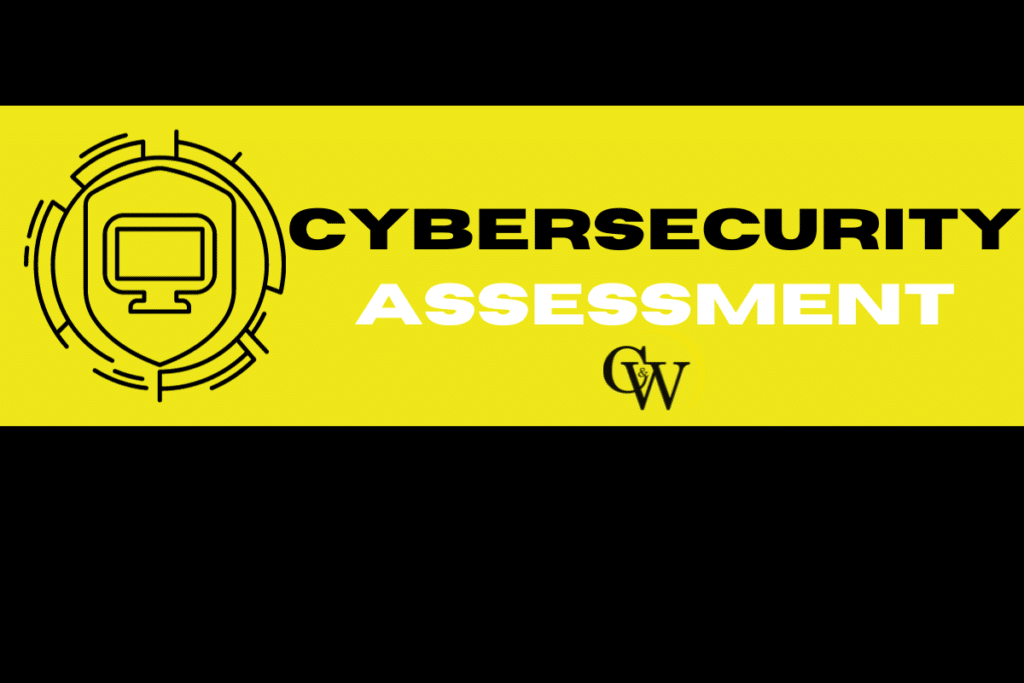Why Cybersecurity Assessment Is Best for Your Business. Learn about it!

Cybersecurity Assessment Is Crucial To Your Business. Learn Why!
As technology continues to advance and become more integrated into our daily lives, the need for cybersecurity has become increasingly important. With cyber threats becoming more sophisticated and prevalent, businesses of all sizes are at risk of being targeted.
One way to protect your business from cyber-attacks is through regular cybersecurity assessments. These assessments involve identifying potential vulnerabilities in your systems and processes, as well as evaluating your current security measures.
What is a Cyber Security Assessment?
A cybersecurity assessment is an evaluation of your business’s overall security posture. It helps identify potential risks and weaknesses in your systems, processes, and infrastructure that could be exploited by cybercriminals. The assessment also takes into account any compliance requirements or industry-specific regulations that your business needs to adhere to.
Cybersecurity Assessment Methods
There are various methods to conduct a cybersecurity assessment, and the most common ones include:
Vulnerability Scanning
This method uses automated tools to scan your network, systems, and applications for known vulnerabilities. It helps identify potential security holes that can be exploited by cybercriminals.
Penetration Testing
Also known as ethical hacking, this method involves simulating real-world cyber attacks to evaluate the effectiveness of your current security measures. It helps identify any weaknesses that could be exploited and provides recommendations for improvement.
Risk Assessment
This method involves identifying potential risks and assessing their impact on your business, such as financial loss or damage to reputation. It also includes evaluating the likelihood of these risks occurring and developing a plan to mitigate them.
Compliance Assessment
This type of assessment ensures that your business is meeting industry-specific regulations and standards, such as PCI-DSS or HIPAA. It involves evaluating your current security measures and identifying any gaps that need to be addressed.

Do You know the 5 C’s of Cybersecurity?
The 5 C’s of cybersecurity serve as a framework for a comprehensive approach to protecting your business from cyber threats. They are:
Cybersecurity Culture:
- This refers to the mindset and attitudes towards security within an organization. A strong cybersecurity culture promotes awareness and proactive measures to prevent cyber attacks.
Cyber Hygiene:
- Just like personal hygiene, maintaining good cyber hygiene involves regularly keeping your systems and processes secure. This includes updating software, using strong passwords, and training employees on cybersecurity best practices.
Continuous Monitoring:
- Cyber attacks are constantly evolving, making continuous monitoring crucial to identify any unusual activity or potential breaches. It helps detect threats early on and mitigate their impact.
Compliance:
- As mentioned earlier, compliance with industry-specific regulations is crucial for businesses. Compliance ensures that your business is following best practices and adhering to security standards.
Collaboration:
- Cybersecurity is not a one-person job. It requires collaboration between different departments, such as IT and human resources, to ensure a holistic approach to security.
The Benefits of Regular Cybersecurity Assessments
Conducting regular cybersecurity assessments offers several benefits for your business, including:
Identifying Vulnerabilities:
- Assessments help identify potential weaknesses and vulnerabilities in your systems that could be exploited by cybercriminals.
Preventing Breaches:
- By identifying and addressing these vulnerabilities, you can prevent data breaches and mitigate the risk of financial loss or damage to your reputation.
Meeting Compliance Requirements:
- Regular assessments ensure that your business is compliant with industry-specific regulations and standards.
Reducing Downtime:
- Cyber attacks can lead to significant downtime for businesses, resulting in financial loss. By identifying and addressing vulnerabilities, you can prevent these disruptions.
Peace of Mind:
- Conducting regular cybersecurity assessments gives you peace of mind knowing that your business is proactively taking steps to protect against cyber threats.
Must know: 3 Types of Risk in Cybersecurity
When it comes to cybersecurity, there are three main types of risk that businesses should be aware of:
Technical Risk:
- This refers to potential vulnerabilities in your technical infrastructure, such as outdated software or weak passwords.
Operational Risk:
- Operational risks involve people and processes, such as human error or lack of employee training on cybersecurity best practices.
Compliance Risk:
- As mentioned earlier, compliance risk involves not meeting industry-specific regulations and standards.
By understanding these risks, businesses can better identify areas that need to be addressed in their cybersecurity strategy.
What Does Cybersecurity Risk Assessment Include?
Before knowing what Risk Assessment includes you must first understand what is a Risk Assessment in Cybersecurity.
It is a process of identifying, evaluating, and prioritizing potential risks to your business’s information assets. This includes assessing the likelihood and impact of these risks occurring, as well as developing strategies to mitigate or manage them.
A cybersecurity risk assessment may include:
Identifying Assets:
- This involves identifying all the assets that need to be protected, such as company data, network infrastructure, and hardware.
Identifying Threats:
- Assessing potential threats to these assets, such as cyber attacks or natural disasters.
Assessing Vulnerabilities:
- Identifying any weaknesses or vulnerabilities in your systems that could be exploited by threats.
Evaluating Impact:
- This involves determining the impact on your business if a threat were to occur, such as financial loss or damage to reputation.
Developing Mitigation Strategies:
- Based on the identified risks, developing strategies to mitigate or manage them effectively.
You Need to Know the Risk Assessment Process.. Here’s How!
The process of conducting a cybersecurity risk assessment typically involves the following steps:
- Scope and Define Objectives: Identify the scope of the assessment, what assets will be included, and what you hope to achieve from the assessment.
- Gather Information: Collect data on your systems, processes, and potential threats.
- Identify Assets: As mentioned earlier, identify all assets that need to be protected.
- Identify Threats: Assess potential threats to these assets and their likelihood of occurring.
- Assess Vulnerabilities: Identify any weaknesses or vulnerabilities in your systems that could be exploited by threats.
- Evaluate Impact: Determine the impact on your business if a threat were to occur.
- Prioritize Risks: Prioritize and rank the risks based on their likelihood and impact.
- Develop Mitigation Strategies: Develop strategies to address or mitigate the identified risks.
- Implement Controls: Implement the necessary controls, policies, and procedures to reduce the likelihood of risks occurring.
- Regularly Review and Update: Regularly review and update your risk assessment to ensure it remains relevant and effective.
It’s important to note that conducting a risk assessment is an ongoing process, as new threats and vulnerabilities can emerge over time. By regularly reviewing and updating your risk assessment, you can stay ahead of potential risks to your business.
The Standard for Cybersecurity Assessment: What You Need to Know
There are various standards and frameworks for conducting cybersecurity assessments, but one of the most widely recognized is the National Institute of Standards and Technology (NIST) Cybersecurity Framework. This framework provides a set of guidelines and best practices for managing and mitigating cybersecurity risks.
The NIST Cybersecurity Framework follows five core functions: Identify, Protect, Detect, Respond, and Recover. These functions outline the key aspects of a comprehensive cybersecurity strategy, including risk assessment and management. By following this framework, businesses can strengthen their overall security posture and better protect against cyber threats.
When Is the Best Time to Perform a Risk Assessment?
Regular risk assessments are essential for maintaining a strong cybersecurity posture, but there are specific times when conducting an assessment is particularly beneficial:
Before Implementing New Technology:
- Before introducing new technology or systems into your business, it’s best to conduct a risk assessment to identify any potential vulnerabilities.
After Significant Changes:
- Any significant changes to your systems, such as updates or upgrades, should be followed by a risk assessment to ensure that they haven’t introduced new vulnerabilities.
Annually or Biannually:
- It’s recommended to conduct risk assessments at least once a year, but it may be beneficial for some businesses to do them biannually for added security.
Why You Should Let C&W Technologies Do Your Cyber Security Assessment!
At C&W Technologies, we understand the importance of cybersecurity risk assessments for businesses. Our team of experts has extensive experience in conducting comprehensive assessments to identify and mitigate potential risks to your business’s information assets.
We follow industry best practices and standards, such as the NIST Cybersecurity Framework, to ensure that our clients have a strong security posture.
By letting us handle your cybersecurity assessment, you can focus on running your business while having peace of mind that your systems and data are protected. Make sure to also have a Network Assessment, Network assessment is an important aspect of maintaining a healthy and efficient computer network. It involves evaluating the overall performance, security, and stability of a network infrastructure. This process helps to identify any potential vulnerabilities or weaknesses that could compromise the network’s functionality.
Overall, conducting regular and thorough cybersecurity risk assessments is crucial for businesses to stay ahead of potential threats and protect their valuable information assets.
Don’t wait until it’s too late, contact us today to schedule your risk assessment with C&W Technologies! We offer a variety of services like Cloud Managed IT Services, VOIP Business Phone Systems, Wireless Network Installation, and many more! Make sure to visit our website to know what we offer so we can cater to your needs!
By following best practices and working with experienced professionals like C&W Technologies, you can ensure that your business has a strong security posture and is prepared for any potential cyber threats. So don’t delay, schedule your risk assessment today!
Don’t Let Your Business Be a Victim of Cyber Attacks – Act Now!
FAQS
Q: Why is conducting a cyber risk assessment important?
A: Conducting a cyber risk assessment helps businesses identify and mitigate potential vulnerabilities in their systems, protect against cyber attacks, and maintain a strong security posture.
Q: What is the NIST Cybersecurity Framework?
A: The NIST Cybersecurity Framework provides a set of guidelines and best practices for managing and mitigating cybersecurity risks. It follows five core functions: Identify, Protect, Detect, Respond, and Recover.
Q: What is the Accountability Act?
A: The Accountability Act, also known as the Health Insurance Portability and Accountability Act (HIPAA), is a federal law that sets standards for protecting sensitive patient information.
Q: What is residual risk/residual risks?
A: Residual risk refers to the level of risk that remains after controls have been implemented to mitigate potential vulnerabilities.
It is important for businesses to regularly review and update their risk assessments to address any residual risks. So, it’s an ongoing process!
Q: Why do businesses need a cybersecurity program?
A: Businesses require a cyber security program to safeguard valuable information assets, maintain a robust security posture, and comply with industry regulations.
It identifies and addresses potential system vulnerabilities while preparing for cyber attacks.
Q: How does risk mitigation differ from risk remediation?
A: Risk mitigation involves implementing strategies and controls to reduce the likelihood and impact of identified risks, while risk remediation focuses on addressing and resolving those risks.
Q: What is risk estimation?
A: Risk estimation is the process of assessing the likelihood and potential impact of identified risks.
It helps businesses prioritize and address the most critical risks first in their risk management strategies. So, it’s an essential step in conducting a thorough risk assessment!
Q: How can conducting a cybersecurity risk assessment help identify potential threats to my business?
A: By conducting a thorough risk assessment, businesses can identify potential threats to their systems and data. This allows them to implement necessary controls and strategies to mitigate these risks and better protect against cyber attacks.
Regularly reviewing and updating the risk assessment also helps in identifying and addressing any new or emerging threats.
Q: What criteria should be considered when conducting a cybersecurity risk assessment?
A: The criteria established earlier in the NIST Cybersecurity Framework, such as Identify, Protect, Detect, Respond, and Recover functions, should be taken into account during a risk assessment.
Other factors to consider include potential threats, impact on business operations, and regulatory compliance requirements.
Q: How does a cybersecurity risk assessment help determine the real risk exposure for a business?
A: By conducting a thorough risk assessment, businesses can identify and evaluate potential vulnerabilities and threats to their systems and data. This allows them to assess the likelihood and impact of these risks and determine their true risk exposure.
It also helps businesses prioritize and implement necessary controls to mitigate these risks and minimize their real risk exposure.
Q: What is the difference between risk analysis and risk assessment?
A: Risk analysis involves identifying potential threats and vulnerabilities to a business’s systems and data, while risk assessment evaluates the likelihood and impact of these risks.
Q: How do business objectives relate to cybersecurity risk assessments?
A: Business objectives play a critical role in determining the scope and focus of a cybersecurity risk assessment. By aligning the risk assessment with specific business objectives, businesses can prioritize and address potential risks that may impact their operations, data, or compliance requirements. This helps in ensuring that the risk assessment is tailored to the unique needs and goals of the business.
Q: How can a cybersecurity risk assessment help businesses evaluate information?
A: By conducting a thorough risk assessment, businesses can identify and evaluate potential vulnerabilities and threats to their systems and data. This allows them to assess the reliability, confidentiality, and integrity of their information assets and make informed decisions on how to protect them.
Q: How do businesses perform a cybersecurity risk assessment?
A: Businesses can assess cybersecurity risks by using frameworks like NIST Cybersecurity Framework, ISO 27001, or CIS Critical Security Controls. This involves identifying potential vulnerabilities, evaluating the likelihood and impact, and implementing security controls to mitigate them.
Q: How does risk management play a role in conducting cybersecurity risk assessments?
A: Risk management is crucial for cybersecurity risk assessments. It involves identifying, assessing, and prioritizing potential risks to critical assets and data. It helps develop a robust risk management strategy, including implementing security controls to address cyber risks.
Q: Why is it important to conduct regular cybersecurity risk assessments?
A: Regular cybersecurity risk assessments help businesses stay aware of potential threats and vulnerabilities in their IT systems and data. They also identify and address new or emerging risks promptly, keeping the business’s security up-to-date.

